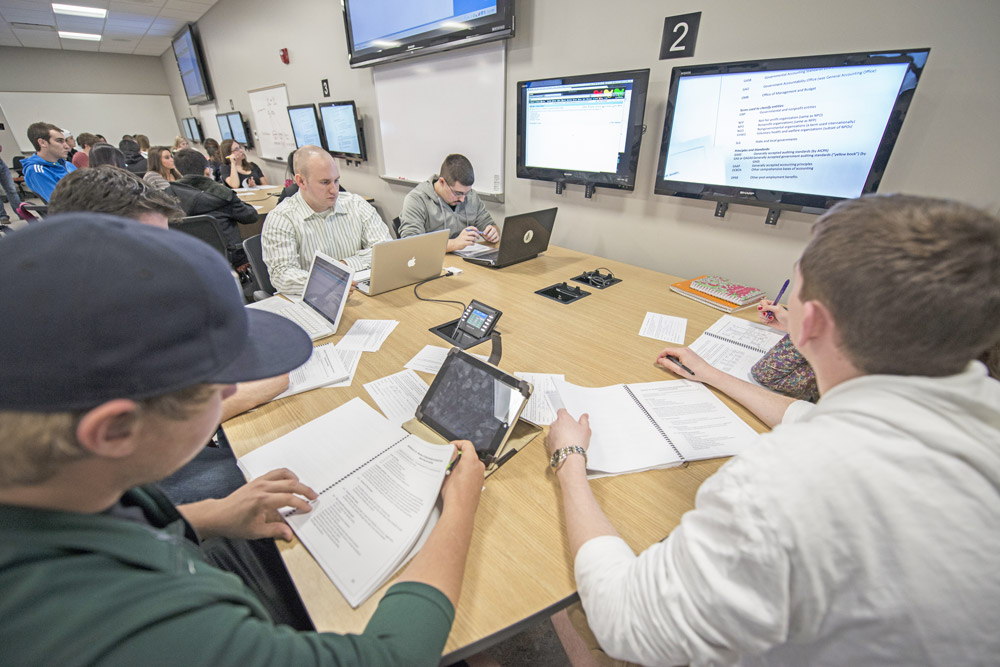Courses today use technology in different ways to enhance course content and teaching. (For instructional design consulting, fill out this out this online form.)
Fully Online Course: A class that meets wholly online utilizing no classroom time. Exams may be proctored in person. (Read more about Online Course Structure.)
Blended Course: An in-person class that uses planned pedagogically valuable online activities to replaces some but not all scheduled meeting time.
Web-Enhanced Course: An in-person class that meets the traditional amount of time and uses online tools to enhance teaching and learning.
Online Teaching
Online teaching can be used exclusively or supplement in-class time with technology tools. Blended courses balance in-person instruction with online teaching techniques.
Online teaching offers automated grading and online testing, reuse course materials, and digitally archive materials. It can also expand student learning opportunities and engagement.
Benefits & Limitations
Some other instructional benefits of online teaching include:
- More structured lessons and activities
- Preparation for digital work environments
- Presentation of information in a variety of ways, including multisensory (e.g., visuals, sounds, video)
- Non-native speakers can interact with content in a variety of ways
- Opportunities for groups or individuals to work through synchronous and asynchronous communication
- Ability to assign pretest and remedial work
Some limitations of online teaching include:
- Instructors may need to learn new skill sets (e.g., pedagogy, technology)
- Not all content can be created by one individual (e.g., simulations)
- New features can be slow to roll out to learning management systems
- Instructional materials need to be developed in advance of student consumption
- Some content and skills may be difficult to teach online
Teaching Techniques
Traditional lectures are based on an instructor’s charisma and delivery style.
Ways to translate traditional lectures to online or blended courses:
- Split your lecture into written segments for students to read.
- Split your lecture into audio or video segments for students to listen to or watch. Make sure to enunciate and provide supplemental material, especially when introducing new terminology.
- Record your in-person lecture.
- Use PowerPoint slides and add audio annotations.
Discussion-based classes facilitate students talking with each other about different topics.
Ways to translate discussion-based classes to online or blended courses:
- Use asynchronous discussion rooms, message boards, blogs, or forums.
- Use live chat and whiteboards to share visuals.
- Use a wiki where students can contribute information.
- Use an interactive game from an online repository (e.g., MERLOT) or customize one for your content.
Group work in classes enables students to demonstrate skills or competencies.
Ways to translate group work to online or blended courses:
- Use your learning management system to create teams and assign a project to each team.
- Use discussion and chat tools for group collaboration.
- Have teams produce a PowerPoint or video presentation for class to view.
Set Communication Expectations
Setting expectations for course communications is important.
- How will you contact students?
- How and when may students contact you?
- What is the expected timeframe for you to respond?
- How will you handle office hours?
You’ll also want to set expectations for group communications.
- Can students send emails to the class?
- Is interaction required or optional?
- If required, what is the expected frequency and communication vehicle?
- If required, how will students be evaluated?


